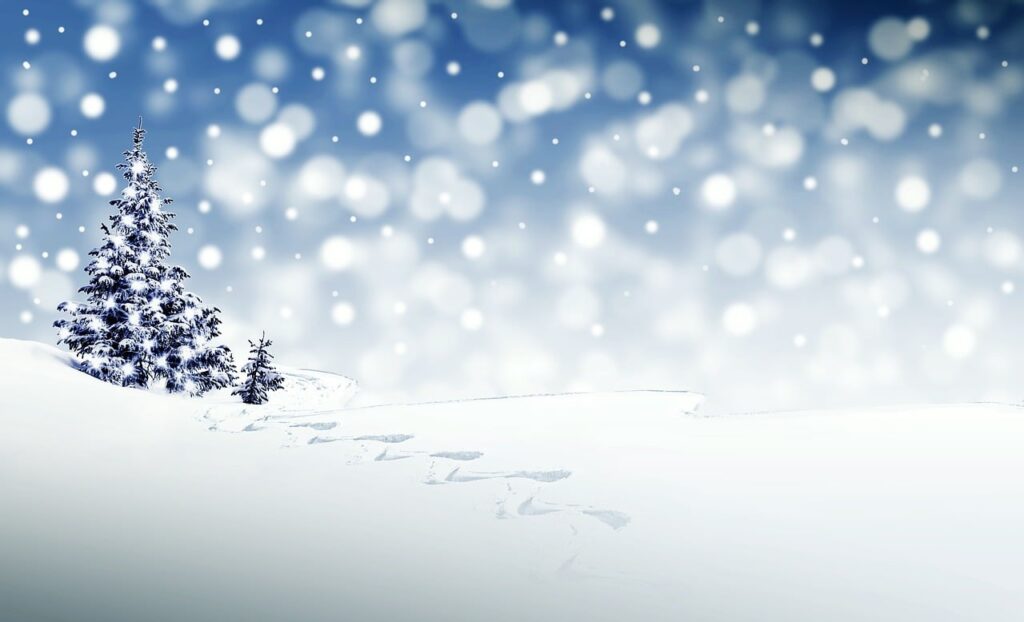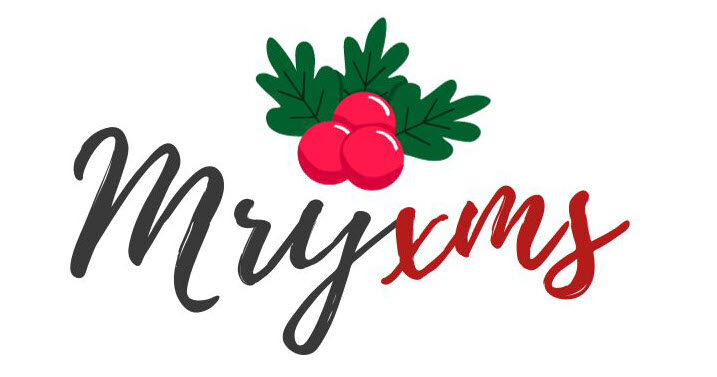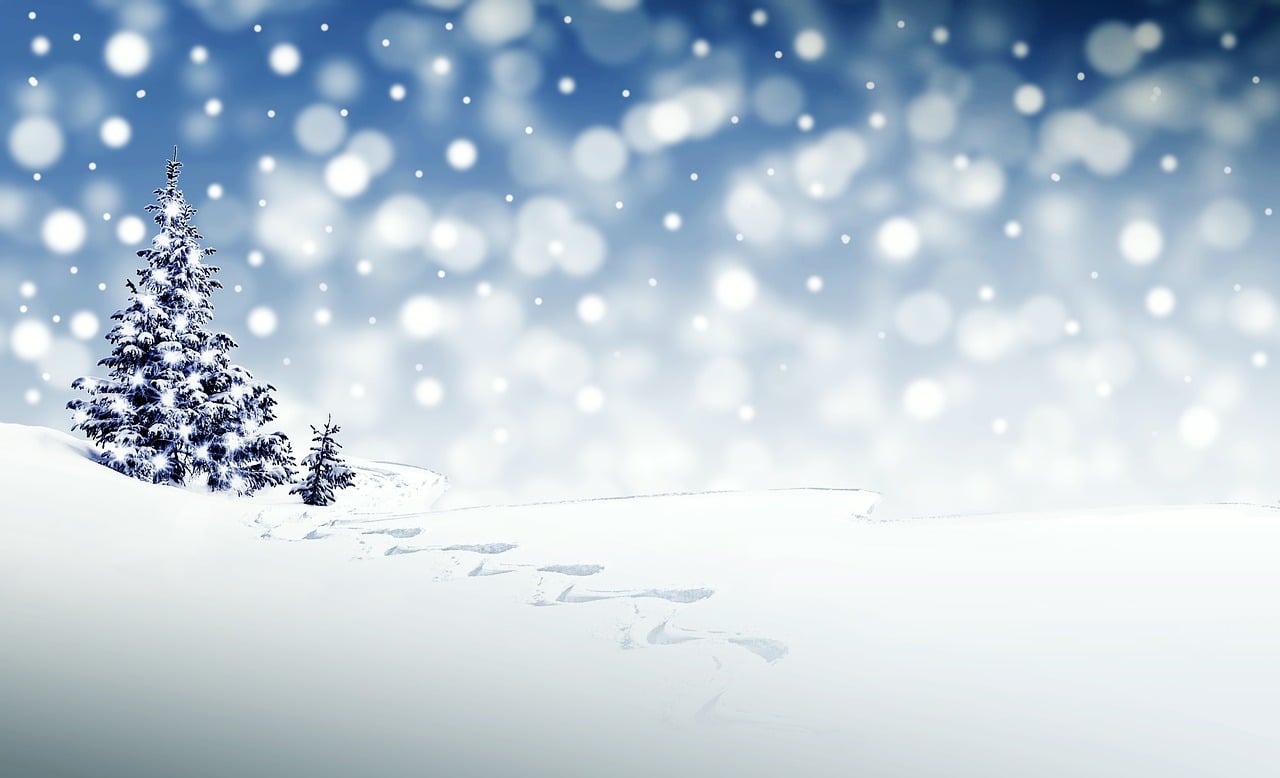Get ready to embark on a fascinating journey through time as we explore the rich history of Christmas traditions. From the burning of yule logs to the jolly figure of Santa Claus, this article takes you on a festive adventure, uncovering the origins and evolution of beloved customs that have come to define the holiday season. Discover the ancient roots of these traditions and how they have been passed down through generations, bringing joy and warmth to homes all around the world. So sit back, relax, and prepare to be enchanted by the captivating story of Christmas traditions.

The Origin of Christmas
The Connection with Winter Solstice
Christmas, as we know it today, has deep roots that can be traced back to ancient civilizations. One significant event that played a role in the development of Christmas is the Winter Solstice. This astronomical occurrence, which takes place on December 21st or 22nd, marks the shortest day and the longest night of the year in the Northern Hemisphere.
Historically, the Winter Solstice was a time of great importance to various cultures, as it symbolized the rebirth of the sun and the return of longer days. Many celebrations and rituals were held during this time to honor the changing seasons and the hope of brighter days ahead. These festivities often involved feasting, lighting fires, and exchanging gifts. The connection between the Winter Solstice and Christmas would become significant as Christianity spread and the holiday evolved.
Early Significance of December 25th
While the specific date of Jesus Christ’s birth is not mentioned in the Bible, December 25th came to be recognized as the day to celebrate the birth of Christ. This date was chosen by early Christians to coincide with existing pagan festivals that were celebrated around the same time. By placing Christmas on December 25th, Christian leaders hoped to attract more people to the faith by incorporating familiar customs and traditions into their religious practices.
December 25th also held significance in Roman society as the day of the winter solstice on the Julian calendar. It was during this time that the Romans celebrated the pagan festival of Saturnalia, which honored the god Saturn. The merging of these Roman festivities with the Christian celebration of Jesus’ birth led to the establishment of December 25th as the official date of Christmas.
Adoption by Early Christians
As Christianity began to spread across Europe, early Christians sought to differentiate themselves from the traditional pagan practices of their ancestors. However, they also understood the importance of assimilating certain customs and traditions into their new faith to facilitate the conversion of pagan populations.
In the 4th century, under the rule of Emperor Constantine, Christianity was declared the official religion of the Roman Empire. This acceptance by the state allowed Christian leaders to transform existing pagan festivals into Christian holidays. Christmas, with its ties to the Winter Solstice and Roman pagan celebrations, gained traction as an annual Christian observance.
History of Yule Logs
Origins in Ancient Paganism
The tradition of the Yule log can be traced back to ancient pagan practices in Northern Europe. In these cultures, the Yule log represented the symbol of the rebirth of the sun and the triumph of light over darkness. It was believed that the log, when burned, would bring good luck and protection to the household for the coming year.
The Yule log was traditionally a large, wooden log, preferably from an oak tree, that was carefully selected and brought into the home as part of the Winter Solstice celebrations. It was often decorated with greenery and sprinkled with wine or oil before being set aflame. The log would burn throughout the night, providing warmth and light to ward off evil spirits.
Incorporation into Christian Traditions
With the rise of Christianity, many pagan customs and rituals were gradually integrated into Christian practices to ease the transition for new converts. The Yule log, with its deep-rooted symbolism and connection to the Winter Solstice, was one such tradition that found its place within Christianity.
As the Yule log became intertwined with Christmas, it took on additional religious significance. It became a representation of the light of Christ, illuminating the darkness and bringing hope to the world. Christians would often mark the Yule log with a cross before lighting it, further emphasizing its connection to Jesus’ sacrifice on the cross.
Present Day Traditions and Symbolism
In modern times, the Yule log has transformed into a popular Christmas decoration and a focal point of festive celebrations. However, the burning of a large log in the fireplace has given way to smaller, more manageable versions, often made of cardboard and adorned with candles or electric lights. The Yule log has become a vibrant centerpiece, evoking feelings of warmth, coziness, and the joy of the holiday season.
While the practice of burning an actual log may be less common today, the symbolism and spirit of the Yule log still endure. The act of lighting candles or flickering lights on a Yule log represents bringing light into the darkness, hope into despair, and the warmth of love and joy into our lives during the Christmas season.
Introduction of Christmas Trees
Origins in Germany
The tradition of decorating Christmas trees dates back centuries and finds its origins in Germany. The Christmas tree as we know it today evolved from earlier traditions of bringing evergreen branches and trees into homes to celebrate the winter solstice.
In Germany, during the Middle Ages, it was common for inhabitants to hang evergreen boughs from ceilings or walls as a symbol of the returning life and vitality of nature. These green decorations were often accompanied by small gifts and sweets for children. Over time, people began to bring entire trees indoors and decorate them with a variety of ornaments and candles.
Expansion to Other Parts of the World
The popularity of the Christmas tree tradition spread beyond Germany during the 17th and 18th centuries. It was introduced to other European countries, such as England, where it was embraced by the nobility and eventually made its way to North America.
In the United States, the Christmas tree gained popularity during the 19th century when German immigrants brought their beloved tradition with them. It quickly caught on, and by the mid-1800s, Christmas trees became a common sight in many American homes.
Modern Traditions Surrounding Christmas Trees
Today, the Christmas tree holds a central place in holiday celebrations around the world. Families gather to trim their trees and adorn them with an array of decorations, from colorful baubles to delicate lights. Many homes feature a star or an angel at the top of the tree, symbolizing the guiding star of Bethlehem or the angelic messengers who announced Jesus’ birth.
The act of decorating the Christmas tree has become a cherished tradition, often accompanied by festive music, hot cocoa, and the joyful anticipation of the holiday season. Each ornament holds a special meaning, whether it’s a family heirloom passed down through generations or a handmade creation crafted by a child’s hands. The Christmas tree stands tall as a beacon of joy, love, and the spirit of giving during this magical time of year.
Legend of Santa Claus
Influence of Saint Nicholas
The legend of Santa Claus is deeply rooted in the story of St. Nicholas, a 4th-century Christian bishop from Myra, a city in what is now present-day Turkey. St. Nicholas was known for his acts of generosity and compassion, particularly towards children and the less fortunate.
One of the most famous accounts of St. Nicholas’ kindness involves three young girls who were in desperate need of dowries to secure their marriages. St. Nicholas, moved by their plight, secretly left bags of gold coins for each girl, which miraculously appeared in their stockings hung by the fireplace to dry.
This act of secret gift-giving became the precursor to the modern tradition of Santa Claus delivering presents on Christmas Eve.
Evolution to the Modern Santa Claus
As the story of St. Nicholas spread throughout Europe, various countries developed their own folklore and traditions surrounding the generous saint. In the Netherlands, he was known as Sinterklaas, while in England, he was referred to as Father Christmas. Each culture added their unique touches to the legend, but the common thread was the embodiment of kindness, generosity, and joyous gift-giving.
In the early 19th century, the image of St. Nicholas began to take on a more recognizable form thanks to the influence of Clement Clarke Moore’s poem, “A Visit from St. Nicholas.” Moore’s depiction of Santa Claus as a plump, jolly man with a sleigh and reindeer captured the imagination of children and adults alike. This description, combined with the stunning illustrations of Thomas Nast, further solidified the image of Santa Claus as we know him today.
Impact on Popular Christmas Culture
The legend of Santa Claus has had a profound impact on popular Christmas culture, capturing the hearts and imaginations of people of all ages. The idea of a jolly, bearded man in a red suit, flying through the sky on a magical sleigh pulled by reindeer, has become synonymous with the excitement and joy of Christmas.
Children eagerly write letters to Santa, detailing their Christmas wishes, and eagerly await his arrival on Christmas Eve. On Christmas morning, they rush to the tree, hoping to find presents that Santa has left for them.
The spirit of Santa Claus has also inspired the tradition of secret gift exchanges among friends, family, and coworkers. These exchanges allow individuals to embrace the joy of giving and receiving surprise gifts, much like the original act of kindness performed by St. Nicholas. From movies and songs to festive decorations, the legend of Santa Claus has shaped the way we celebrate Christmas and continues to bring joy and wonder to those who believe in the magic of the season.

Tradition of Christmas Carols
Historical Roots of Christmas Songs
Christmas carols have been sung for centuries and have deep historical roots. The tradition of singing songs during the holiday season can be traced back to ancient times when people would gather to celebrate the Winter Solstice and the hope of a bountiful spring.
In medieval Europe, traveling minstrels and troubadours would entertain crowds with songs and music during the Christmas season. These songs, often religious in nature, helped to spread the message of Christmas and bring joy to communities. The melodies and lyrics of these early carols evolved over time, reflecting the cultural and religious changes occurring throughout the centuries.
Spread and Influence of Carols
As printing technology advanced during the Renaissance, Christmas carols began to be printed in songbooks, making them more accessible to the general public. This contributed to the spread and popularity of carol singing across Europe.
During the Victorian era in England, carol singing experienced a resurgence of popularity. Many well-known Christmas carols, such as “Silent Night” and “O Holy Night,” were composed during this time, capturing the spirit of the season and becoming timeless classics that are still beloved today.
Role in Contemporary Celebrations
Christmas carols continue to play an integral role in contemporary celebrations around the world. Churches hold special services during the Christmas season, where congregants come together to sing beloved carols that tell the story of Jesus’ birth.
Carolling is also a cherished tradition in many communities, with groups of singers going from door to door, spreading holiday cheer and goodwill. The sound of voices harmonizing in joyous melodies evokes feelings of warmth, unity, and the true spirit of Christmas.
In addition to religious carols, there are also popular secular songs that have become synonymous with the holiday season. From the cheerful tunes of “Jingle Bells” to the heartfelt lyrics of “Have Yourself a Merry Little Christmas,” these songs serve as a soundtrack to the festive atmosphere and bring people together in celebration.
Whether sung in churches, homes, or by roving carollers, Christmas carols continue to uplift spirits, foster a sense of community, and keep alive the traditions and values that make Christmas a special time of year.
Christmas Food Traditions
Historical Beginnings
Food has always played a significant role in Christmas celebrations, with a long history of traditional dishes and indulgent treats that are associated with the holiday season.
The roots of Christmas food traditions can be traced back to the Winter Solstice celebrations of ancient civilizations. During these festivities, people would gather together to feast and share the abundance of food that was harvested and preserved during the preceding months. The feasting was a way to celebrate the changing of seasons and to give thanks for the sustenance that would sustain them through the winter months.
Traditional Christmas Foods around the World
Throughout history, different cultures have developed their own unique Christmas food traditions, each reflecting local customs, ingredients, and regional specialties.
In many Western countries, the Christmas feast centers around a roast turkey, goose, or ham, accompanied by an array of side dishes such as roasted vegetables, stuffing, and cranberry sauce. Mince pies, a sweet pastry filled with spiced dried fruits, are a popular dessert that is often enjoyed during the Christmas season.
In Scandinavian countries, the Christmas feast is known as the “Julbord” and features a variety of hearty dishes, including pickled herring, cured salmon, meatballs, and a rice pudding called “risgrynsgröt.” In France, a traditional Christmas meal may consist of oysters, foie gras, roasted poultry, and a festive Yule log-shaped cake called “bûche de Noël.”
Contemporary Christmas Meals
While many traditional Christmas foods remain popular today, contemporary celebrations have also embraced a wide variety of dishes and culinary influences from around the world.
Modern Christmas feasts often incorporate international flavors, with families serving dishes such as Italian lasagna, Mexican tamales, or Chinese roast duck alongside traditional favorites. Vegetarian and vegan alternatives have also become more prevalent, reflecting the changing dietary preferences and lifestyles of many individuals.
Furthermore, the emphasis on sustainable and locally sourced ingredients has influenced the choices for Christmas menus. Many families and communities now seek to support local farmers and artisans by incorporating seasonal produce and locally made goods into their festive meals.
Regardless of the specific dishes served, the act of coming together to enjoy a special meal with loved ones is at the heart of Christmas food traditions. It is a time to savor the flavors of the season, share stories and laughter, and create lasting memories that nourish both the body and the soul.

Decoration of Homes and Cities
Origin of Home Decorations
The tradition of decorating homes during the Christmas season has its origins in ancient pagan rituals and religious practices. For centuries, people have adorned their homes with festive decorations to create a warm, welcoming atmosphere and to celebrate the joyous spirit of Christmas.
In ancient Rome, evergreen branches were brought indoors and hung as a symbol of life and fertility during the Winter Solstice celebrations. This practice evolved over time, and in the Middle Ages, the use of evergreen garlands, wreaths, and candles became common in Christian households, representing eternal life and the hope of Christ’s coming.
Evolution of Outdoor Christmas Decorations
As the celebration of Christmas evolved, so did the ways in which homes and cities were decorated. In the 17th century, simple candle lights were used to illuminate Christmas trees and windows, creating a magical and captivating sight. However, this practice carried a significant fire risk, often resulting in accidental blazes.
With the invention of electric lights in the late 19th century, outdoor Christmas decorations took on a new level of splendor. The vibrant glow of colored bulbs replaced the flickering candle flames, allowing for larger displays and reducing the risk of fire hazards. Elaborate light shows, animated displays, and larger-than-life decorations became popular, transforming neighborhoods into dazzling wonderlands during the holiday season.
Modern Day Christmas Displays
Today, the tradition of decorating homes and cities for Christmas has reached new heights, with individuals and communities embracing innovation and creativity. From elaborate outdoor light displays to intricately decorated living rooms, the spirit of Christmas comes alive through festive ornaments, lights, and seasonal motifs.
Some homeowners take pride in creating elaborate displays that attract visitors from far and wide. These displays often feature synchronized light shows, inflatable characters, and even music to create an immersive experience that captivates all who pass by. Cities also join in the festivities, adorning their streets, storefronts, and public spaces with dazzling displays, including grand Christmas trees, illuminated decorations, and festive street lighting.
The beauty of modern-day Christmas displays lies not only in their visual appeal but also in the sense of togetherness and joy they evoke. Walking or driving through a neighborhood adorned with twinkling lights and cheerful decorations ignites feelings of wonder, excitement, and a shared appreciation for the magic of the season.
Gift Exchanging Tradition
Historical Significance of Gift-Giving
The tradition of exchanging gifts during the Christmas season has a long and storied history. The custom of presenting gifts can be traced back to ancient times when various cultures celebrated the Winter Solstice and the arrival of longer days.
In ancient Rome, the festival of Saturnalia was marked by the exchange of small gifts, marking a time of goodwill and generosity. As Christianity spread, the act of gift-giving was incorporated into Christmas celebrations as a way to commemorate the gifts of the Magi, who presented valuable offerings to the baby Jesus.
Role of Santa Claus in Gift Exchanges
The legend of Santa Claus, with his reputation for delivering presents to children around the world, has become deeply intertwined with the practice of gift-giving on Christmas Day.
Children eagerly write letters to Santa, expressing their heartfelt wishes, and eagerly wait for him to visit their homes overnight, leaving presents under the Christmas tree. The tradition of hanging stockings by the fireplace, ready to be filled with surprises, has also become a beloved part of the gift-giving tradition.
Santa Claus embodies the spirit of generosity and selflessness, inspiring individuals to give to others and experience the joy of bringing happiness to loved ones. The act of exchanging gifts, whether small tokens of affection or lavish presents, symbolizes the love and appreciation we have for one another and the joy of giving during the holiday season.
Modern Practice of Gift Exchanges
In contemporary society, gift exchanges have taken on various forms and traditions, reflecting the diversity of cultures and personal preferences. From Secret Santa exchanges in workplaces and schools to family gift exchanges, the act of giving and receiving presents continues to be a cherished part of Christmas celebrations.
Gifts are carefully chosen and meticulously wrapped, with the anticipation of watching loved ones unwrap their surprises and see the delight on their faces. In addition to material gifts, the exchange of experiences, acts of service, and charitable donations have also gained popularity, emphasizing the importance of meaningful connections, giving back, and spreading joy to those in need.
While the commercialization of Christmas can sometimes overshadow the true spirit of the holiday, the act of gift-giving remains rooted in the desire to express love, gratitude, and thoughtfulness to those we hold dear. It serves as a reminder that the greatest gift we can give is the gift of our presence, our time, and our generosity towards others.
Origination of Christmas Cards
Early Cards in Victorian England
The tradition of sending Christmas cards is a relatively recent development in the grand history of Christmas traditions. The practice of exchanging Christmas greetings through written correspondence began in Victorian England during the mid-19th century.
In 1843, the first commercially produced Christmas card was created by Sir Henry Cole, a British civil servant. The card featured a festive illustration and a simple message of “A Merry Christmas and a Happy New Year to You.” This pioneering design set off a trend, and soon, Christmas cards became popular among the social elite in England.
The early cards were often intricately designed and hand-crafted, featuring imagery such as winter scenes, religious nativity scenes, and traditional holiday symbols. These cards were often given as tokens of friendship, sent to loved ones, or displayed as part of the holiday decor.
Expansion to America
The tradition of exchanging Christmas cards quickly spread to other parts of the world, including the United States. American publishers began producing their own cards, incorporating imagery that reflected their own cultural traditions and sentiments.
In the 1870s, the development of lithography and improved printing methods made Christmas cards more affordable and accessible to a broader range of people. As a result, the practice of sending and receiving Christmas cards became more widespread and deeply ingrained into the holiday traditions of many cultures.
Contemporary Christmas Card Trends
In today’s digital age, the tradition of sending physical Christmas cards still holds great value and significance. While electronic greetings and social media messages have become prevalent, many individuals continue to embrace the heartfelt sentimentality of a handwritten card.
Christmas cards have evolved to cater to various tastes and preferences. From elaborate pop-up designs to personalized photo cards, the options are vast and diverse. Some people choose to create their own cards, adding a personal touch and showcasing their creativity.
The act of sending and receiving Christmas cards allows individuals to connect with loved ones, near and far, and extend warm wishes during the holiday season. Each card received serves as a reminder of the cherished relationships we have and the joyous memories we share. It is a simple yet profound way to foster connections, spread love, and keep the spirit of Christmas alive.
Christmas Day Services
Historical Significance of Christmas Day Worship
The celebration of Christmas is deeply rooted in religious traditions, particularly within the Christian faith. Christmas Day services hold great importance for Christians around the world as it commemorates the birth of Jesus Christ.
The observance of Christmas as a religious holiday can be traced back to the early centuries of Christianity. However, the specific date of December 25th was not officially recognized until the 4th century, when it was fixed by the Roman Catholic Church during the time of Emperor Constantine.
Christmas Day services became an integral part of Christian worship, providing believers with a dedicated time to gather as a community, reflect on the significance of Jesus’ birth, and offer prayers and praise.
Development and Types of Services
The format and structure of Christmas Day services can vary depending on the denomination and cultural practices. However, the central themes of celebrating Jesus’ birth, giving thanks, and spreading the message of love and peace remain constant.
Churches often hold a Midnight Mass on Christmas Eve, an atmospheric service held at midnight to welcome the birth of Christ. This service is characterized by candlelight, carol singing, and the reading of key biblical passages.
On Christmas Day itself, churches may hold additional services, such as a morning Mass or a special Christmas worship service. These services include prayers, hymns, scripture readings, and a sermon, all focused on the significance of Jesus’ birth and its impact on humanity.
Role in Modern Christian Observance
For Christians, attending Christmas Day services holds spiritual significance and is an opportunity to deepen their faith and connect with fellow believers. The services provide a moment of reflection and gratitude for the gift of Jesus Christ, embodying the true meaning of Christmas.
Christmas Day services also play a vital role in fostering a sense of community and belonging. Families and individuals gather together to worship, sing hymns, and share in the joyous celebration of Jesus’ birth. It is a time to come together, set aside worldly concerns, and embrace the love, hope, and peace that Christmas represents.
While the traditions and practices of Christmas continue to evolve, the practice of attending church services on Christmas Day holds steadfast. It is a time-honored tradition that reminds Christians of the central message of the holiday and inspires them to live out the teachings of Jesus throughout the year.

